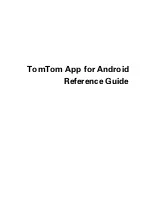
Chapter 15: Port Configuration
162
Section II: Using the Web Browser Interface
Port Type
The port type. The port type is 1000TX for 10/100/1000Base-T twisted
pair ports and 1000BaseF for an optional SFP fiber optic port.
Trunk ID
The trunk group number. A number in this column indicates that the
port is a member of a port trunk. For information about configuring a
trunk, refer to Chapter 16, “Port Trunking” on page 167.
Operational Status
The status of the link between the port and the end node connected to
the port. The possible values are:
Up - A valid link exists between the port and the end node.
Down - The port and the end node have not established a valid link.
Admin. Status
The operating status of the port.
You can use this parameter to enable or disable a port. You may want
to disable a port and prevent packets from being forwarded if a
problem occurs with the node or cable connected to the port. After the
problem has been fixed, you can enable the port to resume normal
operation. You can also disable an unused port to secure it from
unauthorized connections. The possible values are:
Enabled - The port is able to send and receive Ethernet frames. This is
the default setting for a port.
Disabled - The port is disabled.
Speed Mode
The speed and duplex mode settings for the port.
You can use this parameter to set the speed and duplex mode of a
port. Possible settings are:
Auto - The port is using Auto-Negotiation to set the operating speed
and duplex mode. This is the default setting for all ports. The actual
operating speed and duplex mode of the port are displayed in
parentheses (for example, “1000F” for 1000 Mbps full duplex mode)
after a port establishes a link with an end node.
10M/Half - 10 Mbps in half-duplex mode
10M/Full - 10 Mbps in full-duplex mode
100M/Half - 100 Mbps in half-duplex mode
100M/Full - 100 Mbps in full-duplex mode
1000M/Half - 1000 Mbps in half-duplex mode
1000M/Full - 1000 Mbps in full-duplex mode
Summary of Contents for AT-S79
Page 6: ...Contents 6 ...
Page 10: ...Tables 10 ...
Page 22: ...22 Section I Using the Menus Interface ...
Page 28: ...Chapter 2 Getting Started with the Menus Interface 28 Section I Using the Menus Interface ...
Page 64: ...Chapter 5 Port Trunking 64 Section I Using the Menus Interface ...
Page 70: ...Chapter 6 Port Mirroring 70 Section I Using the Menus Interface ...
Page 94: ...Chapter 7 Virtual LANs 94 Section I Using the Menus Interface ...
Page 106: ...Chapter 8 Quality of Service QoS 106 Section I Using the Menus Interface ...
Page 118: ...Chapter 9 802 1x Port based Network Access Control 118 Section I Using the Menus Interface ...
Page 124: ...Chapter 10 RADIUS Authentication Protocol 124 Section I Using the Menus Interface ...
Page 134: ...134 Section II Using the Web Browser Interface ...
Page 166: ...Chapter 15 Port Configuration 166 Section II Using the Web Browser Interface ...
Page 172: ...Chapter 16 Port Trunking 172 Section II Using the Web Browser Interface ...
Page 176: ...Chapter 17 Port Mirroring 176 Section II Using the Web Browser Interface ...
Page 186: ...Chapter 18 Virtual LANs 186 Section II Using the Web Browser Interface ...
Page 192: ...Chapter 19 Quality of Service QoS 192 Section II Using the Web Browser Interface ...
Page 204: ...Chapter 23 Management Software Updates 204 Section II Using the Web Browser Interface ...
Page 208: ...Appendix A AT S79 Software Default Settings 208 ...
















































